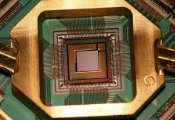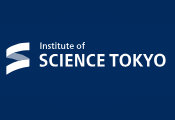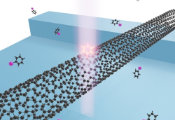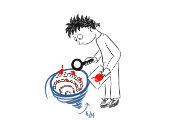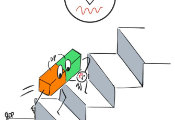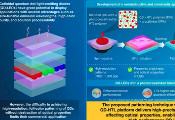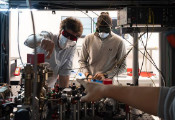NASA Demonstrates ‘Ultra-Cool’ Quantum Sensor for First Time in Space
August 13, 2024 -- NASA’s Cold Atom Lab, a first-of-its-kind facility aboard the International Space Station, has taken another step toward revolutionizing how quantum science can be used in space. Members of the science team measured subtle vibrations of the space station with one of the lab’s onboard tools — the first time ultra-cold atoms have been employed to detect changes in the surrounding environment in space.
The study, which appeared in Nature Communications on Aug. 13, also reports the longest demonstration of the wave-like nature of atoms in freefall in space.
The Cold Atom Lab science team made their measurements with a quantum tool called an atom interferometer, which can precisely measure gravity, magnetic fields, and other forces. Scientists and engineers on Earth use this tool to study the fundamental nature of gravity and advance technologies that aid aircraft and ship navigation. (Cell phones, transistors, and GPS are just a few other major technologies based on quantum science but do not involve atom interferometry.)
Physicists have been eager to apply atom interferometry in space because the microgravity there allows longer measurement times and greater instrument sensitivity, but the exquisitely sensitive equipment has been considered too fragile to function for extended periods without hands-on assistance. The Cold Atom Lab, which is operated remotely from Earth, has now shown it’s possible.
“Reaching this milestone was incredibly challenging, and our success was not always a given,” said Jason Williams, the Cold Atom Lab project scientist at NASA’s Jet Propulsion Laboratory in Southern California. “It took dedication and a sense of adventure by the team to make this happen.”
This type of measurement is already being performed by the U.S.-German collaboration GRACE-FO (Gravity Recovery and Climate Experiment Follow-on), which detects slight changes in gravity to track the movement of water and ice on Earth. An atom interferometer could provide additional precision and stability, revealing more detail about surface mass changes.
“Atom interferometry could also be used to test Einstein’s theory of general relativity in new ways,” said University of Virginia professor Cass Sackett, a Cold Atom Lab principal investigator and co-author of the new study. “This is the basic theory explaining the large-scale structure of our universe, and we know that there are aspects of the theory that we don’t understand correctly. This technology may help us fill in those gaps and give us a more complete picture of the reality we inhabit.”
About the size of a minifridge, the Cold Atom Lab launched to the space station in 2018 with the goal of advancing quantum science by putting a long-term facility in the microgravity environment of low Earth orbit. The lab cools atoms to almost absolute zero, or minus 459 degrees Fahrenheit (minus 273 degrees Celsius). At this temperature, some atoms can form a Bose-Einstein condensate, a state of matter in which all atoms essentially share the same quantum identity. As a result, some of the atoms’ typically microscopic quantum properties become macroscopic, making them easier to study.

